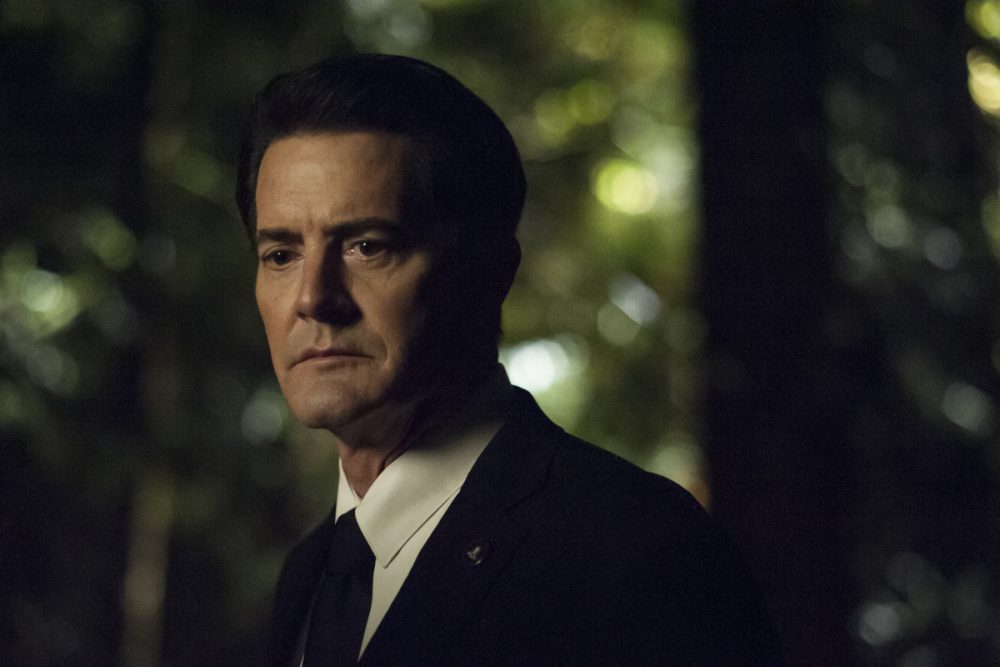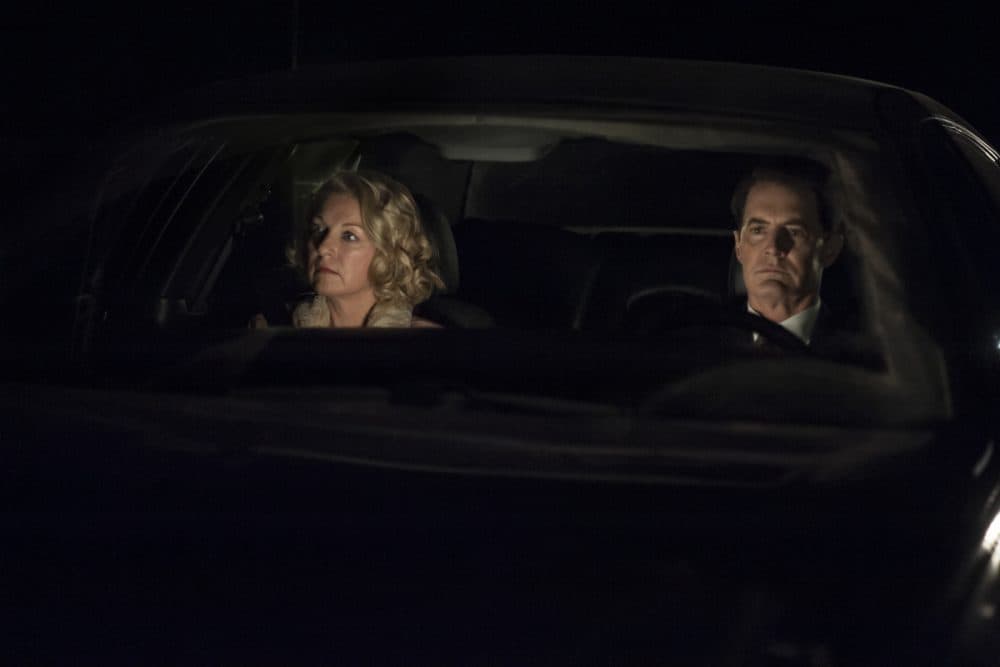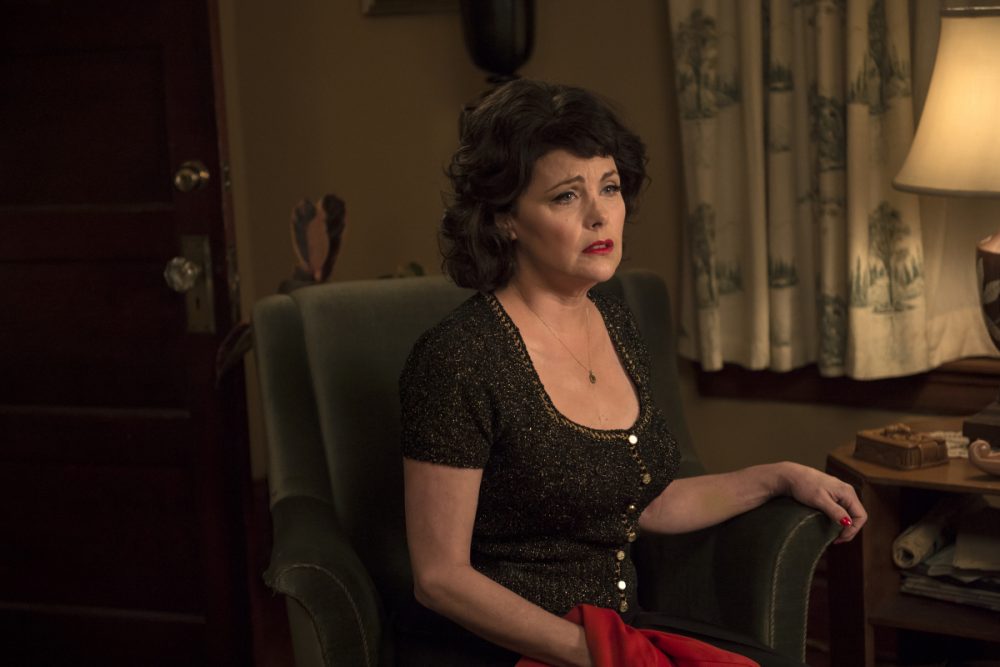Advertisement
Review
Diving Into The Unknown, 'Twin Peaks' Proves You Can't Go Home Again

Editor's Note: Watch out for spoilers!
As 16 episodes’ worth of oddball characters and seemingly disparate plotlines finally converged upon our favorite sleepy little Northwestern logging town, Sunday night’s two-hour finale of "Twin Peaks: The Return" started out feeling like creators David Lynch and Mark Frost were tying all their loose story threads together into the kind of crowd-pleasing, definitive conclusion fans were so cruelly denied when the original series abruptly ended with a cruel cliffhanger back in June of 1991.
But Lynch has made it abundantly clear throughout his career that viewers looking for explanations and resolutions are probably better off watching something else, so it didn’t take long for him and Frost to start tugging on that tidy little narrative bow, which quickly unraveled into strands of seasick uncertainty and soul-crushing terror. “Twin Peaks: The Return” ended with the most maddening, brain-meltingly brilliant final scene of any television program since “The Sopranos.” Ten years later people are still arguing loudly about the latter, which I would bet on being the case here as well.
What a miracle this show has been! Every Sunday night another blind dive into the unknown, cheerfully disregarding the “rules” of serialized television and veering off into formal audacity and surreal asides. (It’s impossible to replace David Bowie, so why not have his role played by a giant talking tea kettle instead?) At its halfway point in July, I wrote about the odd time signatures and ways Lynch lulls us into his dream world of doubles and doppelgängers, where cornball comedy and nightmare-fueled visuals comfortably coincide.

The moment most viewers had been waiting for finally arrived in the penultimate installment, when Kyle MacLachlan’s Special Agent Dale Cooper at long last shocked himself out of the monosyllabic, slapstick stupor in which he’d spent 14 episodes being mistaken for Las Vegas insurance salesman Dougie Jones. This joyful resurrection of the can-do, fast-talking Coop was accompanied by Angelo Badalamenti’s soaring theme music, played under a scene for the first and pointedly only time during the series.
This euphoria proved extremely short-lived, as Sunday night our gang’s weirdly rushed, plucky triumph over Coop’s evil doppelgänger and the now-spherical demon BOB was undercut by a concerned freeze-frame on MacLachlan’s face that lingered on top of the rest of the sequence as an eerie superimposition. (A lot of the special effects on this show make you think something’s wrong with your television.) The overlay of his haunted eyes imbued the character’s long-awaited homecoming with an awful anxiety.
Advertisement
Which makes sense, as “Twin Peaks: The Return” was ultimately an anti-nostalgic nostalgia revival about how you can’t go home again. Refusing to ape the original’s spoofy soap opera structure, it didn’t even look anything like the old series, with a crisp video palate in contrast to the first show’s soft, golden hues. Lynch and Frost repeatedly, adamantly denied the comforts of the familiar, sidelined old regulars in favor of new creations and kept their most beloved character comatose for the first 16 hours. That’s nerve.
Sometimes it even felt like trolling, as in the case of fan-favorite Audrey Horne, unceremoniously dropped into the end of the 12th episode having a droning, 11-minute argument with her homunculuar husband in which they exhaustively talked about people we’d never met. Sherilyn Fenn’s kinky-innocent pinup girl allure was such a huge part of the original “Twin Peaks” mystique her that banishment to a comically tedious art-punk sidebar this time around had a whiff of the punitive, particularly when Audrey reprised her old dance movies for a harrowing reveal.

The past is gone, the show kept reminding us. It’s a lesson headstrong Agent Cooper should have heeded but in the first half of Sunday night’s finale (with some assistance from that sassy tea kettle) he foolishly flung himself back to 1989, thinking he could save Laura Palmer and thus circumvent this whole cycle of supernatural suffering. Instead, Coop lost Laura in the woods and shattered the timeline, effectively re-writing the original series and everything we’ve been watching since clear out of existence.
(The modern-day MacLachlan was cleverly edited into footage from the 1992 film “Fire Walk With Me,” and we got to see an alternate edit of the original “Twin Peaks” pilot’s opening scene in which nobody was wrapped in plastic and Jack Nance actually got to go fishing.)
The last hour of “Twin Peaks: The Return” was a chilling Möbius strip of trademark Lynchian doom — all empty highways, despairing sex scenes, shifting identities and familiar faces made strange. If you thought Cooper getting trapped in the Black Lodge at the end of the second season was a pessimistic ending, now our errant knight has come unstuck in time, perpetually reprising a quest in which he’s trying to repair a past that may never have existed.
Earlier in the episode Miguel Ferrer’s sublimely sarcastic FBI agent was giving a hard time to his lecherous boss, beautifully played by Lynch himself. “You’re getting soft in your old age,” Ferrer quipped.
Lynch replied, “Not where it counts, buddy.”
Damn straight.
